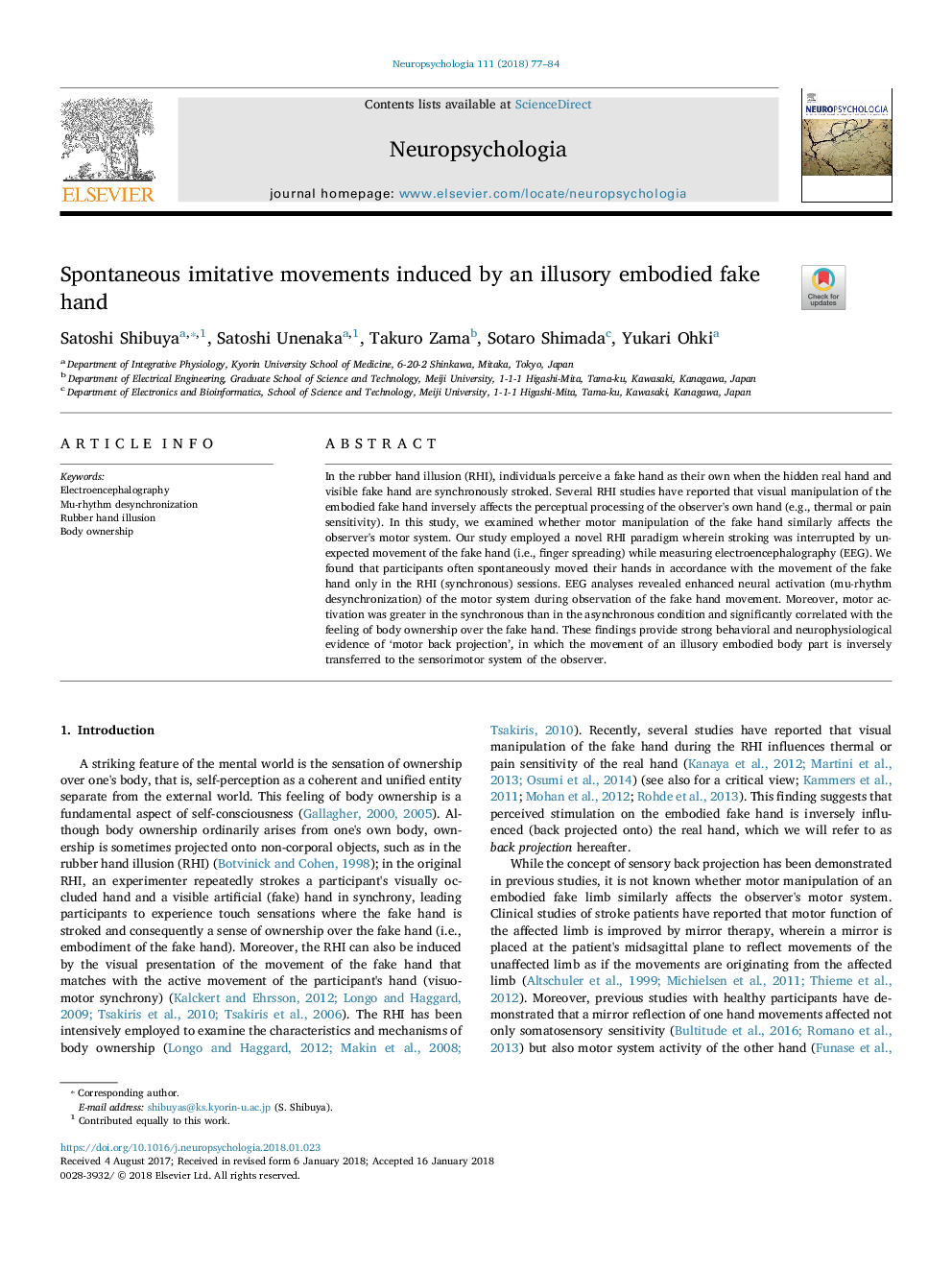ترجمه فارسی عنوان مقاله
حرکات تقلیدی خودبخشی ناشی از دستکاری جعلی دستنخورانه و خیالی است
عنوان انگلیسی
Spontaneous imitative movements induced by an illusory embodied fake hand
| کد مقاله | سال انتشار | تعداد صفحات مقاله انگلیسی |
|---|---|---|
| 123164 | 2018 | 8 صفحه PDF |
منبع

Publisher : Elsevier - Science Direct (الزویر - ساینس دایرکت)
Journal : Neuropsychologia, Volume 111, March 2018, Pages 77-84
ترجمه کلمات کلیدی
الکتروانسفالوگرافی، شبیهسازی ریتم موسیقی، توهم دست دستی لاستیک، مالکیت بدن،
کلمات کلیدی انگلیسی
Electroencephalography; Mu-rhythm desynchronization; Rubber hand illusion; Body ownership;

